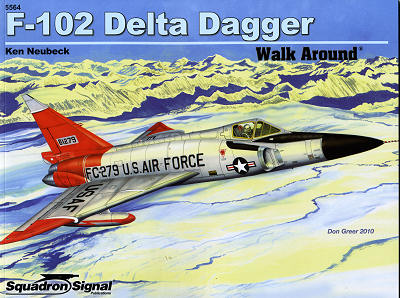 For a period
of time, it was in vogue to develop aircraft that have delta wings. There are
several advantages to this type of wing, the main one being is that it provided
a large lifting surface and the ability to fly supersonic speeds, making it
perfect for an interceptor, whose main reason for being is to get off the ground
and up to the attacking aircraft as soon as possible. Several successful
aircraft used this wing including the Mirage III family, the F4D Skyray and to
some extent, the MiG-21; all developed as interceptors.
For a period
of time, it was in vogue to develop aircraft that have delta wings. There are
several advantages to this type of wing, the main one being is that it provided
a large lifting surface and the ability to fly supersonic speeds, making it
perfect for an interceptor, whose main reason for being is to get off the ground
and up to the attacking aircraft as soon as possible. Several successful
aircraft used this wing including the Mirage III family, the F4D Skyray and to
some extent, the MiG-21; all developed as interceptors.
In the US it was the F-102 that started this trend for the
USAF, followed by the F-106. Of course, the F-102 had some development problems
such as being unable to break the sound barrier, but a modification of the
fuselage to what we now call 'area rule', allowed that to happen. Though
deployed to Vietnam, the aircraft never shot down another plane, but was itself
shot down by a North Vietnamese MiG on one occasion. its greatest use was in the
various Fighter Interceptor Squadrons of the US Air Defense Command and later
performing the same function in the Air National Guard.
In this book, author Ken Neubeck provides a history of the development
of the aircraft, then goes into some detail about each of the different
variants. Basically, there were only two variations once out of the prototype
stage. The single seat F-102A and the two seat TF-102A, which had side by side
seating, something a bit unusual for trainers based on tactical fighters.
Typically, the meat of the book concentrates on museum and
display aircraft from various places around the world. The color photos are
superbly done and show every detail, a real boon for the modeler. There are also
a considerable number of period photos, most is glorious color, showing the
aircraft in action and sections that point out various detail differences
between the single and twin seat versions.
Though little is said about one of the more salient features of
the plane, the Case X and Case XX wing, I'd like to provide an amendment to one
statement. On a page 52 photo caption the author states "All TF-102A aircraft
featured the Case XX wing that was introduced in later production Delta Daggers,
including the F-102A and TF-102A". From the reading and research I have done,
the Case XX wing was introduced in airframe 56-1317 and was not retrofitted to
earlier airframes.
If someone has documentation that shows otherwise, I'd be delighted to see it. So if the TF-102A was, for instance, serial number 54-1351 as
shown in the book, it would have the Case X wing while another TF-102A
photographed, 56-2339, would have the Case XX wing. Perhaps a small point, but
modelers discuss this feature probably more than any other part of the aircraft.
It all adds up to about as comprehensive a book on
the subject that you will find and one that I know you will not only find useful
but it is an interesting read as well.
October 2010
My thanks to Squadron Products for the review copy. Get yours
today at your favorite shop or on-line retailer.
If you would like your product reviewed fairly and quickly, please contact me or see other details in the Note to Contributors.
 For a period
of time, it was in vogue to develop aircraft that have delta wings. There are
several advantages to this type of wing, the main one being is that it provided
a large lifting surface and the ability to fly supersonic speeds, making it
perfect for an interceptor, whose main reason for being is to get off the ground
and up to the attacking aircraft as soon as possible. Several successful
aircraft used this wing including the Mirage III family, the F4D Skyray and to
some extent, the MiG-21; all developed as interceptors.
For a period
of time, it was in vogue to develop aircraft that have delta wings. There are
several advantages to this type of wing, the main one being is that it provided
a large lifting surface and the ability to fly supersonic speeds, making it
perfect for an interceptor, whose main reason for being is to get off the ground
and up to the attacking aircraft as soon as possible. Several successful
aircraft used this wing including the Mirage III family, the F4D Skyray and to
some extent, the MiG-21; all developed as interceptors.